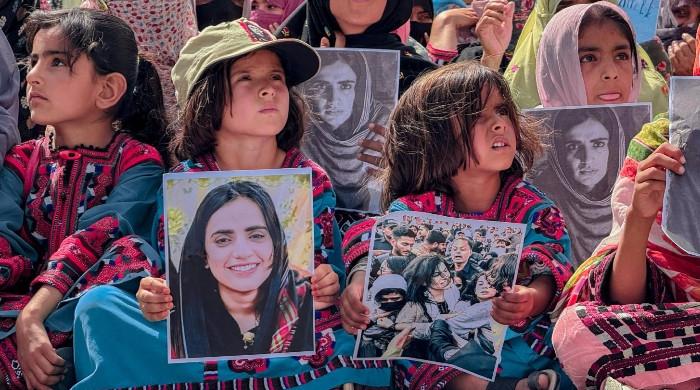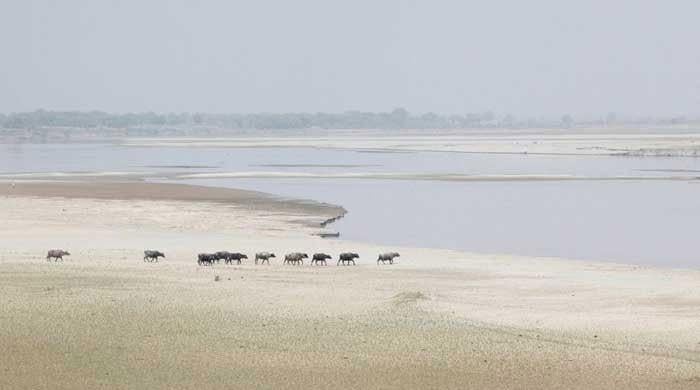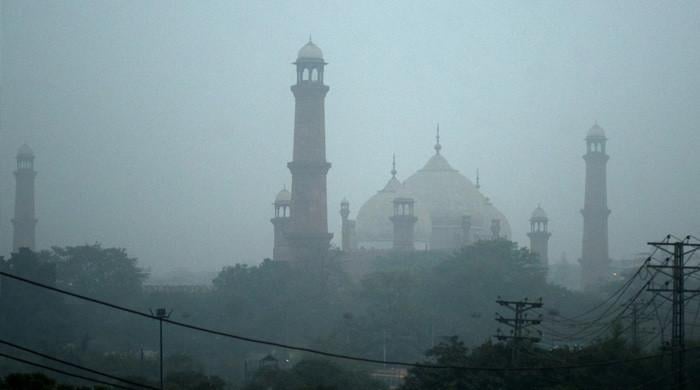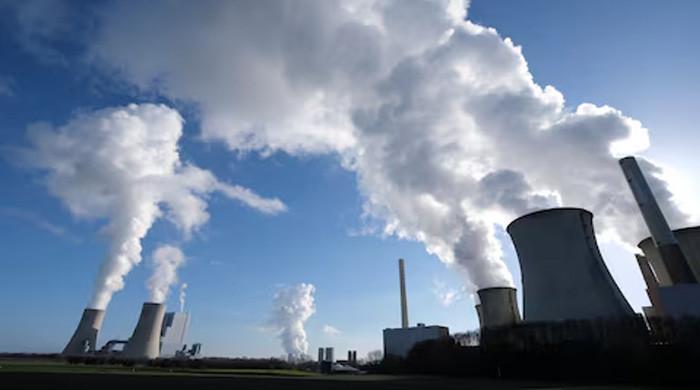The future of Pakistan's economy - Part II
Future will be secured by increased use of internet, cloud computing, Big Data and data analytics, AI and machine learning in govt as well as private sector
December 02, 2022

The short-term measures described in Part I will not have the desired effects unless the emphasis is shifted in our school system towards Science, Technology, Engineering, Creative Arts and Mathematics (STEAM) subjects. Focus on these subjects along with content, hardware, network, software application, choices of pedagogical tools and so on all has to be entrusted to private service providers (PSP) under performance-linked contractual agreements.
The setting up of computer labs, local area networks, data centres etc would require a massive jump in the allocation of budgetary resources towards education. But this would be a worthwhile use of our scarce resources which are at present being squandered on paying higher-than-market salaries in government schools to indifferent, non-committed, incompetent, work-shirking teachers (there are many exceptions to this observation, of course, as many teachers show a great deal of passion in teaching their students).
The future will be secured by increased use of the internet, cloud computing, Big Data and data analytics, artificial intelligence and machine learning in the government as well as the private sector to drive economic growth through deep integration of the next generation of ICT technologies with the real economy.
Looking ahead, the five goals of Digital Pakistan should be: one, increased access and connectivity; two, digital infrastructure; three, digital skills, talent and literacy; four, e-government; and five, innovation and entrepreneurship.
India’s software-as-service (SAAS) industry is projected to be worth $1 trillion in value by 2030. There are already thousands of such companies and more than hundreds of them are unicorns. We may never reach that goal but we must drive to attain IT, ITES exports target of at least $10 billion by 2025 and improve our ranking in the Global Innovation Index.
According to a McKinsey study, over a decade, data flows collectively have raised the world’s GDP by approximately 10% and contributed $2.8 trillion to annual trade — a large share of the increase in global GDP compared to the worldwide trend of physical goods. Data can be leveraged these days for efficiency, productivity, supply chain and innovation. Digital technology will no longer be a driver of marginal efficiency but an enabler of fundamental innovation.
The risks of climate change are already raising their hydra head and their sweep is projected to be ferocious in altering the way we live. The recent floods in Pakistan that have devastated and displaced almost 33 million of the population, and caused a loss of $30 billion or 10% of GDP is ample testimony that global warming has already begun to make its pernicious impact. The evidence from other parts of the world - is also overwhelming. The accelerated melting of glaciers overloading rivers is likely to affect food, water and energy security and pose a grave threat to the living standards to which we have become accustomed.
A recent World Bank study has estimated that by 2050 Pakistan’s GDP is likely to contract 18-20% per year; 6.5-9% of GDP is likely to be lost due to climate change as increased floods and heatwaves reduce agriculture and livestock yields, destroy infrastructure, sap labour productivity and undermine health. Additionally, air pollution by 6.5% and water shortages in agriculture could reduce GDP by more than 4.6%; 10% of all irrigation water will need to be repurposed to meet non agriculture demands.
At the same time, Pakistan will have a population of 350 million people by 2050 all of whom will have to be fed, clothed, sheltered and gainfully employed in an environment where production of the staple food crops, generation of electricity and availability of water are likely to be declining. The increased population’s overall food demand would expand by 50%, which implies that 56% more crops calories have to be grown compared to what was being produced in 2010.
The challenge is how to meet the future land requirements without deforestation and bringing more area under reforestation while stabilising the climate, providing livelihoods and reducing poverty. Water availability is likely to recede to an extremely stressful level while the demand for meat, milk and poultry is set to increase by 50% because of rising incomes and larger populations.
Urbanisation is already pushing people out of agriculture and land is being used for housing, commercial and industrial purposes. Sooner than later, the urban population will form 60% of the total population with their set of demands and preferences quite different from what we are observing today. If climate risks are not tackled forcefully, Pakistan may end up with lost economic growth, worsening poverty and a long-term threat to human capital, infrastructure, assets and livelihoods.
For Pakistan the agenda to tackle climate change should involve: a) R&D of drought and pest-resistant varieties; (b) conserving and maximising efficiency in the use of surface and ground water resources; (c) switching from fossil fuels to renewable energy; (d) sustained efforts on forestation and watershed management; and (e) accessing the Green Climate Fund for developing climate resilient ecologically sustainable infrastructure.
We now turn to the domestic economic endowments and initial conditions that would impinge upon the future economic outcomes in conjunction with the global megatrends. The boom and bust cycle that has characterised our history can be broken if the country’s political leaders reach a consensus on the fundamental structural reforms that need to be undertaken to set the course straight. The irony is that in their election manifestos there is a great deal of convergence on these issues but their behaviour once they are in the opposition is quite contrary to their pronouncements and promises made to the electorate. This disconnect between words and actions has been a constant source of economic grief. So, what are those structural reforms that need to be put in place?
One, the young population has to be absorbed in the domestic workforce but also for the overseas markets in the advanced countries. Investment in human capital through education, not for obtaining degrees and credentials but to assimilate and apply knowledge and skills to solve problems, is the biggest challenge for the country.
The Human Capital Index and social indicators are appallingly low in comparison to neighbouring countries and the business-as-usual approach won’t work. Right from bringing 20 million out-of-school children back to formal or informal education to giving priority to STEAM subjects at schools and universities to continuous reskilling and upskilling of the labour force — the tasks ahead are quite onerous. Gender disparities, if removed, can also act as a stimulus.
Past neglect has landed the country in the present position and the gears are to be shifted towards a more carefully designed action plan that is faithfully implemented by successive governments Two, governance reforms by strengthening institutions, and devolving powers and resources to elected local governments would improve the delivery of basic public goods and services and build the trust of citizens in the government, lowering the degree of disaffection and helplessness. Local government leaders after gaining experience in managing affairs and solving problems will have the capacity to tackle the issues when they reach the provincial and federal governments. The present unease felt by the electorate — that the elected political leaders are unable to cope with the complex problems of policymaking and overseeing implementation of policies, programmes and projects – would thus be remedied to some extent.
A lot of spadework has been done for improving governance but what is needed is the political consensus to carry it forward as the beneficiaries at some point of time or other will be the political parties themselves as they will be able to meet the expectations of their electorate and the country would move forward.
To be continued...
The writer is the author of 'Governing the ungovernable'.
Originally published in The News
Originally published in The News











